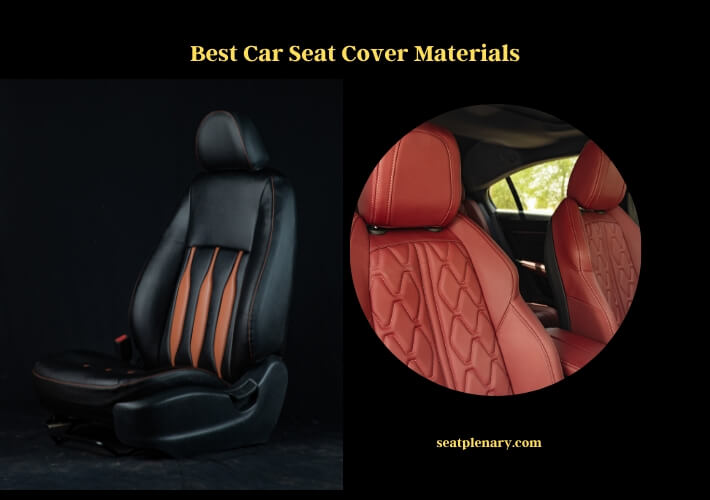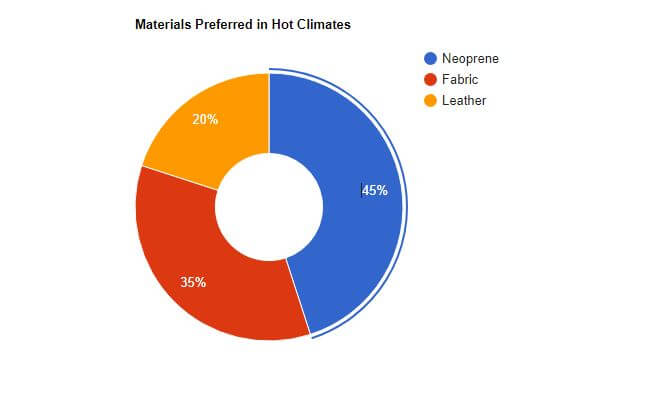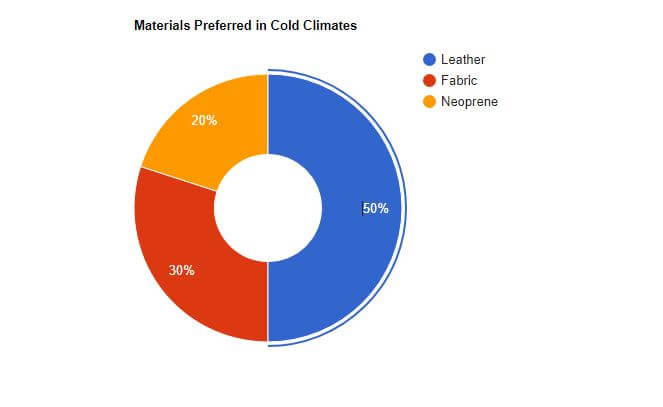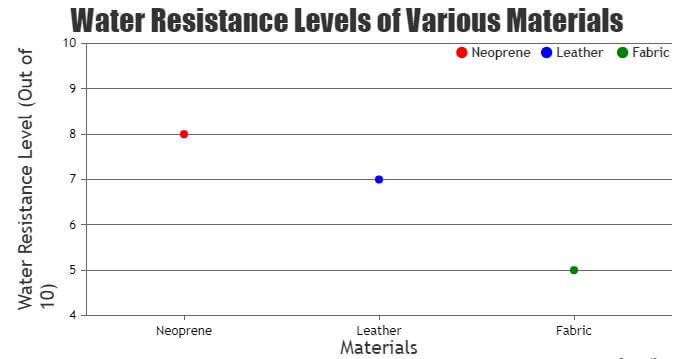The best car seat cover material is one that offers durability, comfort, and protection against various elements.
Car seat covers serve multiple purposes, from enhancing the vehicle’s interior aesthetics to safeguarding the original upholstery. For those residing in warmer climates, the ideal seat cover material should be breathable and resistant to heat. Neoprene seat covers stand out in this regard, as they are not only comfortable but also provide a barrier against hot temperatures, making them one of the best car seat covers for hot weather.

Waterproofing is another crucial feature to consider. Waterproof car seat covers ensure that any spills, rain, or other moisture doesn’t seep into the original upholstery, maintaining the car’s interior in pristine condition. Materials like neoprene are inherently water-resistant, making them a top choice for those seeking waterproof seat cover material.
In terms of variety, car seat covers come in various designs and materials, catering to different needs. Whether you’re looking for individual covers or a car seat covers full set, there’s something for everyone. Choosing the best car seat material is essential not only for aesthetic appeal but also for the longevity and protection of your vehicle’s interior.
Background on Car Seat Covers
Evolution of car seat cover materials
Car seat covers have come a long way since their inception. Initially, they were simple fabrics draped over seats to protect them. Over time, as cars became more sophisticated, so did the materials used for seat covers. From basic cotton fabrics to advanced synthetic materials, the journey has been quite remarkable. Think of it like fashion trends; what was in vogue a decade ago might not be the go-to choice today. Similarly, as technology and preferences evolved, so did the materials for car seat covers.
Importance of selecting the right material
Imagine buying a pair of shoes. You wouldn’t pick a pair just because they look good, right? Comfort, durability, and suitability for the occasion are all factors. Similarly, choosing the right car seat cover material is crucial. It’s not just about aesthetics; it’s about ensuring the longevity of your car’s interior, providing comfort during rides, and ensuring easy maintenance. It’s like picking the perfect attire for your car’s seats, ensuring they look good and feel great for years to come.
Factors to Consider Before Choosing
Durability and lifespan
The lifespan of a car seat cover largely depends on its material. Some materials wear out quickly, while others can withstand the test of time. It’s like comparing a sturdy leather jacket to a delicate silk scarf. Both have their merits, but one is undoubtedly more durable than the other. When selecting a car seat cover, consider how often you use your car and the kind of wear and tear it might be subjected to.
Comfort and feel
Ever sat on a leather couch on a hot summer day? Not the most comfortable experience, right? The material of your car seat cover can significantly impact your driving experience. Some materials feel soft and plush, while others might be sleek but sticky in the heat. It’s essential to find a balance between luxury and practicality, much like choosing between a cozy sweater and a stylish blazer.
Maintenance and cleaning
Let’s face it; spills, dirt, and stains are inevitable when it comes to car interiors. But here’s the good news: some seat cover materials are a breeze to clean, while others might require a bit more elbow grease. Think of it as the difference between machine-washable fabrics and those that need dry cleaning. Your choice should factor in how much time and effort you’re willing to invest in upkeep.
Cost-effectiveness
Budget plays a pivotal role in any purchase decision. While some materials might be easy on the pocket, others could be a bit pricier. It’s like choosing between a designer brand and a budget-friendly option. Both serve the purpose, but the experience might differ. When selecting a car seat cover material, weigh the benefits against the cost to make an informed choice.
Neoprene Seat Covers
Properties and benefits
Neoprene, often associated with wetsuits, has made a splash in the car seat cover market. This synthetic rubber offers a snug fit, ensuring that the cover doesn’t slide or wrinkle. It’s water-resistant, making it a champion against spills. Imagine spilling a drink on a raincoat versus a cotton shirt; the former repels, while the latter absorbs. That’s the magic of neoprene. Plus, it provides a cushioned feel, enhancing the comfort of your ride.
Drawbacks and considerations
No material is without its quirks. While neoprene is fantastic in many aspects, it’s not entirely breathable. So, on particularly hot days, it might feel a tad warmer. It’s like wearing rubber shoes in the sun; they’re protective but can get a bit toasty. Also, while neoprene is water-resistant, it’s not entirely waterproof. So, while it can handle minor spills, it might not fare well against larger liquid mishaps.
Comparison of Neoprene with other materials based on durability and cost
| Material | Durability (Out of 10) | Cost (Average Price per Set) |
|---|---|---|
| Neoprene | 8 | $150 |
| Leather | 9 | $250 |
| Fabric | 6 | $100 |
Leather and Synthetic Leather Covers
Distinction between genuine and synthetic leather
Leather, with its rich texture and luxurious feel, has been a favorite for car interiors for ages. Genuine leather, sourced from animal hides, is known for its durability and elegance. On the flip side, synthetic leather, often called faux leather, is a man-made material designed to mimic the look and feel of genuine leather. Think of it as the difference between a gourmet burger and a veggie burger; both look similar, but the ingredients and taste differ.
Benefits of leather covers
Leather car seat covers scream luxury. They’re durable, age beautifully, and give your car’s interior a touch of class. It’s like swapping your regular shoes for a pair of polished leather boots; the upgrade is evident. Leather also has a natural ability to resist moisture to some extent, making it a decent choice for those occasional coffee spills.
Drawbacks and considerations
While leather is undeniably classy, it does come with its set of challenges. It can get hot in the summer and cold in the winter. Remember those leather couches? Yep, they can get sticky or chilly. Moreover, genuine leather requires maintenance to keep it looking its best. It’s like having a pair of leather shoes; they need occasional polishing to retain their shine.
Popularity of leather vs. synthetic leather over the years

Fabric Seat Covers
Types of fabric materials
Fabric seat covers are like the versatile wardrobe essentials that fit any occasion. They come in a plethora of materials, from cotton and polyester to blends that offer the best of both worlds. It’s akin to having a wardrobe filled with different types of shirts – cotton for comfort, polyester for durability, and blends for those who want a bit of both.
Benefits of fabric covers
Fabric seat covers are often lauded for their breathability. They don’t get too hot in the summer or too cold in the winter, making them a year-round choice. They’re also available in a myriad of designs and colors, allowing car owners to personalize their interiors. It’s like having a canvas and painting it in the hues of your choice; the possibilities are endless.
Drawbacks and considerations
While fabric covers are versatile, they aren’t as resistant to spills and stains as some other materials. It’s similar to spilling coffee on a cotton shirt; it’s bound to leave a mark. Moreover, they might not be as durable as leather or neoprene, especially if exposed to prolonged sunlight. It’s essential to consider these factors and perhaps opt for treated or blended fabrics that offer better resistance and longevity.
Materials Suited for Hot and Cold Climates
Percentage distribution of materials preferred in hot climates

Percentage distribution of materials preferred in cold climates

Waterproof and Water-Resistant Materials
Distinction between waterproof and water-resistant
Waterproof and water-resistant might sound similar, but there’s a subtle difference. Imagine wearing a raincoat in a drizzle versus a downpour. While it might hold up well in light rain, it might not fare as well in a torrential downpour. Similarly, water-resistant materials can handle minor spills and light rain, but waterproof materials are designed to keep water at bay, even in more extreme conditions.
Materials that offer the best protection against moisture
If you’re the kind who often finds themselves spilling drinks or if you live in a region with frequent rain, you might want to consider materials that offer superior protection against moisture. Neoprene, with its wetsuit heritage, is a top contender. Leather, especially when treated, can also repel water to some extent. It’s like choosing between an umbrella and a raincoat; both offer protection, but one might be more suited to your needs.
Water resistance levels of various materials

Innovative and Emerging Materials
Eco-friendly and sustainable options
With the world moving towards sustainability, car seat cover materials are no exception. There’s a growing demand for eco-friendly options that don’t compromise on quality or aesthetics. Materials like bamboo fabric and recycled polyester are making waves in the market. It’s akin to the rise of organic food or sustainable fashion; people are becoming more conscious of their choices and their impact on the environment.
Technological advancements in seat cover materials
The world of car seat covers is buzzing with innovation. From materials that change color with temperature to those that can self-clean, the future looks promising. Imagine having a shirt that repels stains or shoes that adapt to your foot’s shape. That’s the kind of innovation we’re witnessing in car seat cover materials.
Biodegradable
High tensile strength
Heat-resistant
Hydrophobic nature
Adaptable structure
Recyclable
FAQs
How Do Car Seat Cover Materials Impact Resale Value?
The choice of car seat cover material can significantly influence a vehicle’s resale value. High-quality materials, such as genuine leather or premium synthetic blends, can enhance the car’s interior aesthetics, making it more appealing to potential buyers. On the other hand, low-quality or worn-out seat covers might deter some buyers or lead to a reduced offer. It’s similar to how well-maintained home interiors can fetch a higher price in the real estate market. Investing in durable and visually appealing seat covers can be a strategic move for those considering selling their vehicle in the future.
Are There Allergenic Concerns with Certain Seat Cover Materials?
Yes, some car seat cover materials can cause allergic reactions in sensitive individuals. For instance, genuine leather might contain traces of chemicals used in the tanning process, which can trigger allergies in some people. Similarly, synthetic materials might release volatile organic compounds (VOCs) that can cause discomfort or allergic reactions. It’s essential to choose hypoallergenic materials or ensure the seat covers undergo thorough cleaning and airing out before installation, much like checking fabric materials before buying clothing.
Can the Recommended Cleaning Products for Car Seats Also be Used on Car Seat Covers?
Yes, the recommended cleaning products for car seats can often be used on car seat covers as well. It is important to check the label and make sure the product is safe for use on both materials. There are many cleaning car seat options available that are suitable for both car seats and seat covers.
Which Car Seat Cover Materials Are Safe to Put in the Dryer?
When it comes to drying car seat covers, it’s important to check the material first. Generally, materials like polyester, cotton, and microfiber are safe to put in the dryer. However, it’s always best to refer to the manufacturer’s instructions to ensure you don’t damage the cover.
Which Car Seat Cover Material is Best for Protecting Leather?
Finding the right car seat cover material to protect car seat leather is crucial. Opt for genuine leather or high-quality synthetic materials, like neoprene or vinyl. These options offer excellent durability, resistance to spills and stains, and effective protection against fading and cracking due to sun exposure. Ensure that the chosen cover is specifically designed to safeguard car seat leather, providing long-lasting comfort and preservation.
How Do I Maintain the Color Vibrancy of My Seat Covers?
Maintaining the color vibrancy of seat covers depends on the material and its exposure to direct sunlight. UV rays can fade colors over time. To prevent this, consider parking in shaded areas or using window tints and sunshades. Cleaning the seat covers with products designed specifically for the material can also help retain color. Think of it like using color-protecting shampoos for dyed hair; the right care can prolong the vibrancy.
Can Seat Cover Materials Affect Airbag Functionality?
Yes, the choice of seat cover material and its installation can impact airbag functionality. Some seat covers are designed with special seams that break upon airbag deployment. It’s crucial to ensure that seat covers are compatible with the vehicle’s airbag system. Not doing so can hinder the airbag’s performance in emergencies, much like how a blocked exit can hamper evacuation during a fire.
What’s the Role of Padding in Seat Covers?
Padding in seat covers serves multiple purposes. It enhances comfort, especially during long drives, by providing cushioning. Padding also acts as an insulator, maintaining temperature stability against extreme cold or heat. Furthermore, it offers an added layer of protection for the original seat material underneath. Think of padding as the cushioning in athletic shoes; it absorbs shock, provides comfort, and enhances overall performance.
How Do I Choose Between Natural and Synthetic Materials?
Choosing between natural and synthetic materials boils down to personal preference, budget, and specific needs. Natural materials, like leather, offer a luxurious feel and aesthetic but might require more maintenance. Synthetic materials, on the other hand, can be more durable and resistant to spills, but might not offer the same premium look and feel. It’s akin to choosing between a woolen sweater and a polyester one; each has its pros and cons.
Can I Customize Seat Cover Materials for Enhanced Features?
Absolutely! Many manufacturers offer customization options for seat covers. This can range from adding extra pockets and storage solutions to embedding heating or cooling systems for added comfort. Some even offer personalized embroidery or design options. Customizing seat covers is like tailoring a suit; it ensures a perfect fit and can incorporate features based on individual preferences.
Choosing the right car seat cover material is akin to selecting the perfect outfit. It should not only look good but also feel comfortable and last a long time. From the classic elegance of leather to the practicality of neoprene and the versatility of fabric, each material has its unique strengths and quirks. With the rise of sustainable and technologically advanced materials, the choices are only set to expand. So, whether you’re looking for luxury, durability, or eco-friendliness, there’s a perfect car seat cover material out there waiting for you. Just like in fashion, there’s no one-size-fits-all; it’s all about finding what suits you and your car best.
